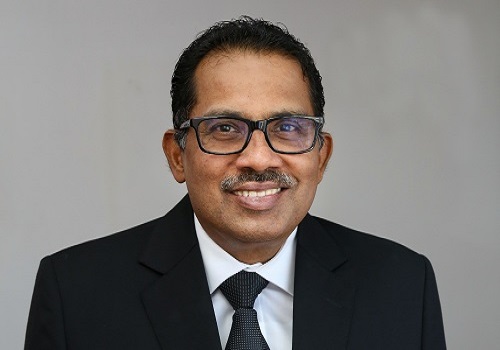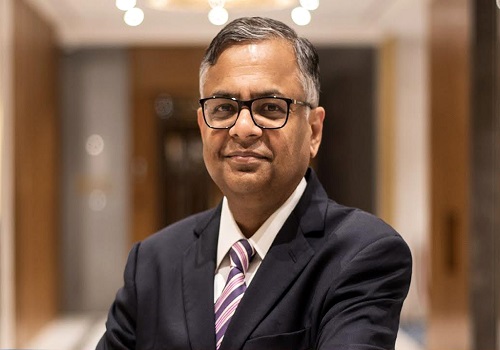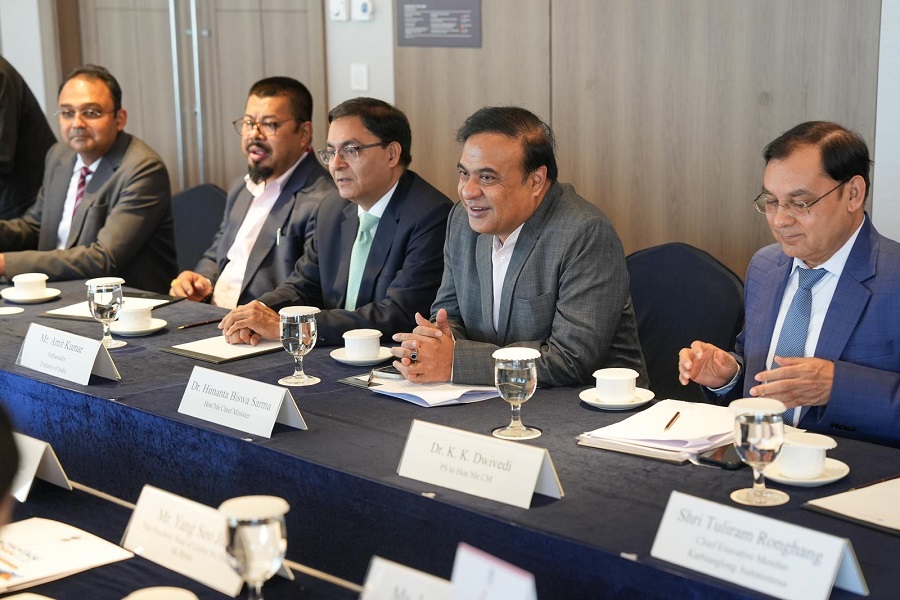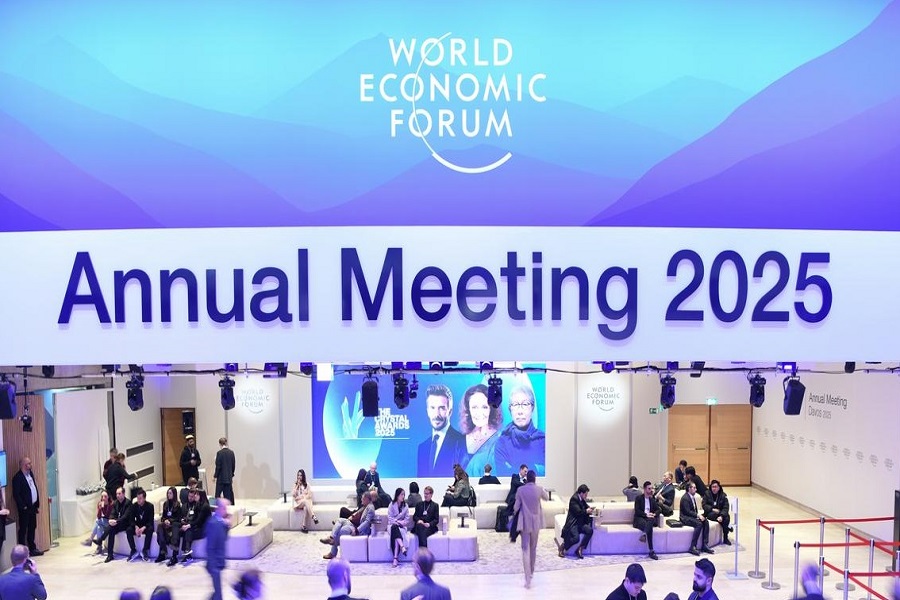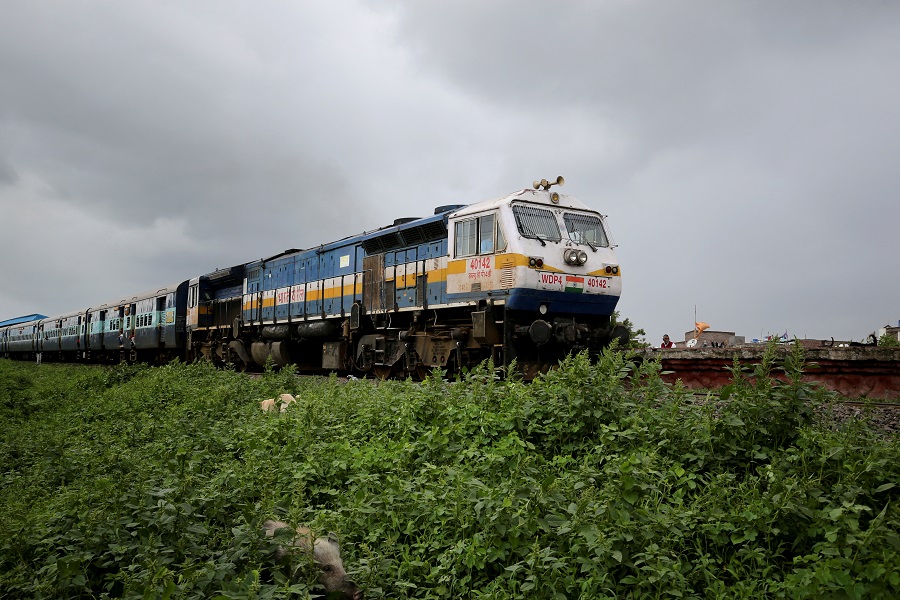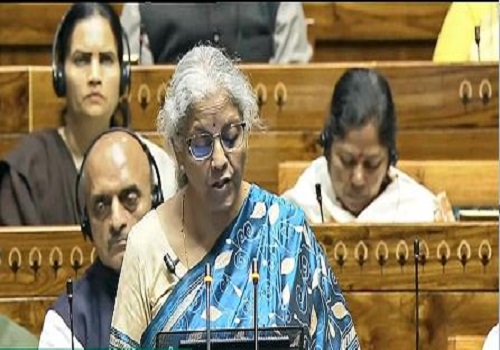9 priorities of Union Budget: FM unveils road map for 'Viksit Bharat’

Finance Minister Nirmala Sitharaman, presenting her seventh-consecutive Budget and her first in Modi 3.0, spotlighted nine priority areas for generating ample opportunities for all.
She also said that these nine priorities of Union Budget 2024 will form the foundation for future Budgets of the Modi government.
The nine priority areas include: Productivity and resilience in agriculture; employment and skilling; improved human resources; social justice; manufacturing and services; urban development; energy security; infrastructure; innovation; research and development and next-generation reforms.
Education, job generation, employment, skilling, MSMEs and the middle class are among the key thrust areas of this Budget.
It also presented a road map for accomplishing the Prime Minister’s package of five schemes for employment, skilling and other opportunities for 4.1 crore youth over a five-year period with a central outlay of Rs2 lakh crore.
This year, a provision of Rs1.48 lakh crore has been made for education, employment and skilling.
Below are the key focus and thrust of nine priorities, as outlined in FM Sitharaman’s Budget speech:
Priority 1: Productivity and resilience in agriculture. A provision of Rs1.52 lakh crore for agriculture and allied sector; new 109 high-yielding and climate-resilient varieties of 32 field and horticulture crops for cultivation by farmers; one crore farmers to be initiated into natural farming over next two years; 10,000 need-based bio-input resource centres will be established; large scale clusters for vegetable production will be developed closer to major consumption centres; government to facilitate implementation of Digital Public Infrastructure (DPI) in agriculture for coverage of farmers and their lands in three years.
Priority 2: Employment & Skilling. The Government will implement schemes for Employment Linked Incentive as part of Prime Minister’s package Scheme A: First Timers.
This scheme will provide one-month’s wage to all persons newly entering the workforce in all formal sectors.
The Direct Benefit Transfer of one-month’s salary in three instalments to first-time employees, as registered in the EPFO, will be up to Rs15,000. The eligibility limit will be a salary of Rs1 lakh per month. The scheme is expected to benefit 210 lakh youth.
Scheme B: Job creation in manufacturing. This scheme will incentivise additional employment in the manufacturing sector, linked to the employment of first-time workers.
An incentive will be provided at specified scale directly both to the employee and the employer with respect to their EPFO contribution in the first four years of employment.
The scheme is expected to benefit 30 lakh youth entering the workforce, and their employers.
Scheme C: Support to employers. This employer-focussed scheme will cover additional employment in all sectors. All additional employment within a salary of Rs1 lakh per month will be counted. The government will reimburse to employers up to Rs3,000 per month for two years towards their EPFO contribution for each additional employee.
The scheme is expected to incentivise additional employment of 50 lakh people. Over 20 lakh youth will be skilled over a five-year period. For skilling in collaboration with state governments and industry, 1,000 Industrial Training Institutes will be upgraded in hub-and-spoke arrangements with outcome orientation.
Government will launch a comprehensive scheme for providing internship opportunities in 500 top companies to one crore youth in five years. Interns will gain exposure for 12 months to real-life business environment, varied professions and employment opportunities.
An internship allowance of Rs5,000 per month along with one-time assistance of Rs6,000 will be provided.
Model Skill Loan Scheme will be revised to facilitate loans up to Rs7.5 lakh with a guarantee from a government promoted fund. This measure is expected to help 25,000 students every year. For helping youth who have not benefitted under any government initiatives, financial support for loans upto Rs10 lakh for higher education in domestic institutions is planned. E-vouchers for this purpose will be given directly to one lakh students every year for annual interest subvention of three per cent of the loan amount.
Priority 3: Inclusive Human Resource Development and Social Justice. States in the Eastern part of the country are rich in endowments and have strong cultural traditions. The government will formulate a plan, Purvodaya, for the all-round development of the eastern region of the country covering Bihar, Jharkhand, West Bengal, Odisha and Andhra Pradesh. Government will also support development of road connectivity projects, namely (1) Patna-Purnea Expressway, (2) Buxar-Bhagalpur Expressway, (3) Bodh Gaya, Rajgir, Vaishali and Darbhanga spurs, and (4) additional two-lane bridge over Ganga River at Buxar at a total cost of Rs26,000 crore.
Power projects, including setting up of a new 2,400 MW power plant at Pirpainti, will be taken up at a cost of Rs21,400 crore.
New airports, medical colleges and sports infrastructure in Bihar will be constructed.
Recognising Andhra Pradesh’s need for a capital, the government will facilitate special financial support through multilateral development agencies. In the current financial year Rs15,000 crore will be arranged.
Three crore additional houses under the PM Awas Yojana in rural and urban areas in the country have been announced, for which the necessary allocations are being made.
For promoting women-led development, the budget carries an allocation of more than Rs3 lakh crore for schemes benefitting women and girls.
For improving the socio-economic condition of tribal communities, the government will launch the PM Janjatiya Unnat Gram Abhiyan by adopting saturation coverage in tribal-majority villages and aspirational districts. This will cover 63,000 villages benefitting five crore tribal people.
More than 100 branches of India Post Payment Bank will be set up in the North East region to expand banking services. This year, a provision of Rs2.66 lakh crore for rural development including rural infrastructure has been made.
Priority 4: Manufacturing & Services. For facilitating term loans to MSMEs for purchase of machinery and equipment without collateral or third-party guarantee, a credit guarantee scheme will be introduced which will operate on pooling of credit risks of such MSMEs. A separately constituted self-financing guarantee fund will provide, to each applicant, guarantee cover up to Rs100 crore.
The limit of Mudra loans will be enhanced to Rs20 lakh from the current Rs10 lakh for those entrepreneurs who have availed and successfully repaid previous loans under the ‘Tarun’ category.
For facilitating MSMEs to unlock their working capital by converting their trade receivables into cash, the turnover threshold of buyers for mandatory onboarding on the TReDS platform will be reduced from Rs500 crore to Rs250 crore.
The government will facilitate development of investment-ready ‘plug and play’ industrial parks with complete infrastructure in or near 100 cities.
As many as 12 industrial parks under the National Industrial Corridor Development Programme also will be sanctioned.
Priority 5: Urban Development. Government will facilitate development of ‘Cities as Growth Hubs’. This will be achieved through economic and transit planning, and orderly development of peri-urban areas utilising town planning schemes.
Transit Oriented Development plans for 14 large cities with a population above 30 lakh will be formulated.
Under the PM Awas Yojana Urban 2.0, housing needs of one crore urban poor and middle-class families will be addressed with an investment of Rs10 lakh crore. This will include the central assistance of Rs2.2 lakh crore in the next five years.
A provision of interest subsidy to facilitate loans at affordable rates is also envisaged.
Priority 6: Energy Security Nuclear energy is expected to form a very significant part of the energy mix for Viksit Bharat. Towards that pursuit, the government will partner with the private sector for setting up Bharat Small Reactors; Research & Development (R&D) of Bharat Small Modular Reactor and R&D of newer technologies for nuclear energy.
The R&D funding announced in the interim budget will be made available for this sector.
A joint venture between NTPC and BHEL will set up a full scale 800 MW commercial plant using AUSC technology. The government will provide the required fiscal support.
Priority 7: Infrastructure Phase IV of PMGSY will be launched to provide all-weather connectivity to 25,000 rural habitations which have become eligible in view of their population increase.
A provision of Rs1.5 lakh crore for long-term interest free loans has been made this year also to support the states in their resource allocation.
Priority 8: Innovation, R&D. The government will operationalise the Anusandhan National Research Fund for basic research and prototype development.
Further, the government will set up a mechanism for spurring private sector-driven research and innovation at commercial scale with a financing pool of Rs1 lakh crore in line with the announcement in the interim budget.
With our continued emphasis on expanding the space economy by five times in the next 10 years, a venture capital fund of Rs1,000 crore will be set up.
Priority 9: Next Generation Reforms. States will be incentivised for land-related reforms and actions within the next three years through appropriate fiscal support. Land-related reforms and actions in rural areas to cover land administration and planning. In urban areas, it will cover urban planning, usage and building bylaws. Rural land related actions will include ULPIN or Bhu-Aadhaar for all lands, digitisation of cadastral maps, survey of map sub-divisions as per current ownership, establishment of land registry, and linking to the farmers registry.
These actions will facilitate credit flow and other agri services. Land records in urban areas will be digitised with GIS mapping. An IT-based system for property record and tax administration will be established. It will improve the financial position of Urban Local Bodies.




